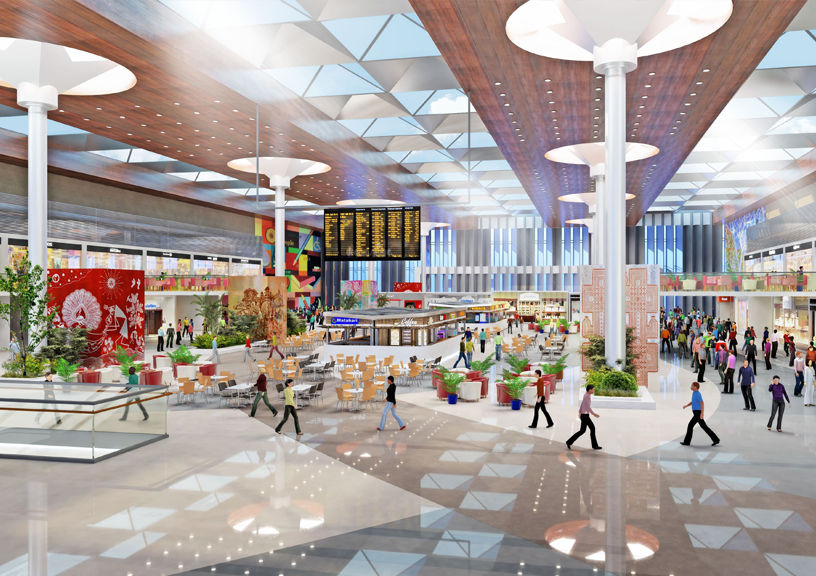GPM Architects & Planners (Gian P. Mathur & Associates) has successfully designed the Yesvantpur railway station as a multimodal hub, which will efficiently enhance the overall quality of urban infrastructure by reducing distances and travel time, offering maximum comfort to its users. The Redesigned Railway Station forges a new identity for Bengaluru and its citizens as it is in synergy with the Indian Government’s Smart City Mission.

Railways account for the most prominent and affordable form of public transport in India, with a ridership of 24 million passengers on a daily basis. With inevitable urbanisation, we must develop mass transit systems that synergise with augmented infrastructure in the city. Adequate amenities are therefore provisioned to handle such a huge capacity in order to ensure smooth functionality.
As part of the redevelopment of the Indian infrastructure system and under the endeavour of RLDA, the Integrated Re-Development of Yesvantpur junction railway station in Bengaluru is envisioned with state-of-the-art passenger facilities, parking needs, retail options and food courts, thereby activating the public urban hub.
Located at Yesvantpur, in the north-western part of Bangalore, the project aims to provide world-class facilities and services to passengers at a minimum cost by monetising the commercial development potential on the land parcels adjoining the railway station. Additionally, the redevelopment aims to simultaneously work on the improvement, enhancement and development of the urban fabric around the station, working on better accessibility of the station and improved marketability of its surroundings.

Ensuring smooth railway operations and extensive passenger convenience, the demolition and construction works are planned in a phased manner on the station site. As a part of developing a self-sustained facility, the redevelopment proposal accounts for the current needs of the railways and its future expansion owing to a predicted increase in traffic volumes. With a planned increase in strategically located parking areas and catering to world-class amenities — the new Departure building will primarily act as an upgraded facility with modern amenities to its predecessor.
The development of the new station building is proposed both on the East and West sides of the existing station, requiring extensive planning to adjust the new structures in the current master plan. A concourse is also proposed over the tracks and platforms — connecting the new departure building to improve connectivity for the passengers. The design segregates the arrival and departure passenger traffic, making passenger circulation hassle-free. The departure building is planned to comprise ticketing areas and waiting halls for different categories of passengers. Both the departure buildings are proposed with railway offices as required by the railways.
To reinforce the security at the station, DFMDs and baggage scanners will be installed. The arrival zones on both sides of the tracks are designed to enable a smooth and seamless exit for arriving passengers from the railway station. The vehicular circulation within the station premises is redesigned to keep the area safe and conflict-free for vehicles and pedestrians. The improved design aims at providing an unhindered and smooth pedestrian, vehicular, parcel, luggage, linen, etc., movement in and around the station premises. Moreover, the installation of state-of-the-art passenger information and display systems, security systems and fire safety systems further aid smooth daily operations.

The Yesvantpur railway station redevelopment is envisaged as a major junction for the high-intensity exchange of passengers, goods and services and up-scaled operations with amenities that match airports. The core ideology behind the redevelopment and design of the station and its premises is to revamp the circulation and develop a better station with modern facilities. Additionally, the project intends to provide travellers with a better and more seamless experience while utilising the unmatched commercial potential of the underutilised railway land. The efficiency of public transport depends on the availability of different transport modes and their connectedness. Developing railway stations as multimodal hubs will efficiently enhance the overall quality of urban infrastructure by reducing distances and travel time, offering maximum comfort to its users.
